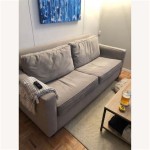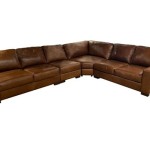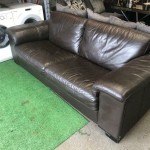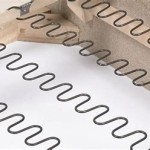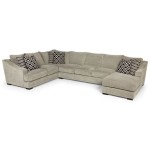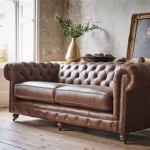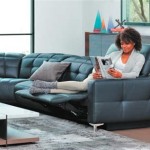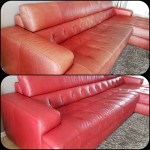Down Stuffed Sofa: Comfort, Considerations, and Long-Term Value
A down stuffed sofa represents a significant investment in home comfort and aesthetics. The inherent qualities of down, a natural material derived from the plumage of waterfowl, offer a unique seating experience characterized by unparalleled softness and a luxurious feel. However, purchasing and maintaining a down sofa involves careful consideration of several factors, including cost, durability, maintenance requirements, and ethical sourcing.
This article aims to provide a comprehensive overview of down stuffed sofas, exploring their advantages, disadvantages, and the key aspects to consider before making a purchase. Understanding these nuances will enable informed decision-making and ensure long-term satisfaction with this premium furniture choice.
Understanding Down: Properties and Sourcing
Down is composed of fluffy clusters found beneath the outer feathers of ducks and geese. These clusters possess exceptional insulation properties, trapping air and providing warmth. In the context of sofa construction, down is used as a filling material, typically combined with feathers to create a comfortable and resilient cushion. The ratio of down to feathers significantly impacts the overall feel of the sofa, with a higher down content resulting in a softer and more luxurious seating experience.
The sourcing of down is a critical ethical consideration. Responsible sourcing practices ensure the humane treatment of waterfowl and avoid the unsustainable harvesting of down. Certifications such as the Responsible Down Standard (RDS) provide assurance that the down used in a sofa meets stringent animal welfare criteria. Consumers should actively seek out sofas that are certified by reputable organizations to support ethical and sustainable practices.
The quality of down also influences its performance and longevity. Higher-quality down possesses greater fill power, which refers to the amount of space an ounce of down occupies. Down with a higher fill power offers superior loft and insulation, resulting in a more comfortable and durable sofa. Factors that contribute to down quality include the species of waterfowl it is collected from, the maturity of the bird, and the processing methods employed.
Benefits of a Down Stuffed Sofa
The primary advantage of a down stuffed sofa lies in its unparalleled comfort. The soft and conforming nature of down allows the sofa to cradle the body, providing exceptional support and relaxation. This is particularly beneficial for individuals seeking a comfortable seating option for extended periods of time. The ability of down to mold to the user's form creates a personalized comfort experience that is difficult to replicate with synthetic fillings.
Beyond comfort, down possesses inherent breathability, allowing air to circulate and prevent overheating. This is a significant advantage over synthetic fillings, which can trap heat and lead to discomfort, particularly in warmer climates. The moisture-wicking properties of down also contribute to a more comfortable seating experience, preventing the buildup of perspiration and maintaining a dry and pleasant surface.
Aesthetically, down stuffed sofas often exhibit a luxurious and inviting appearance. The plushness of the cushions and the subtle shifting of the filling create a visually appealing texture that enhances the overall aesthetic of a living space. Down sofas can be styled to complement a wide range of interior design schemes, from traditional to contemporary.
Furthermore, well-maintained down sofas boast exceptional longevity. While requiring more specialized care than sofas with synthetic fillings, a down sofa can provide decades of comfortable use with proper maintenance and regular cleaning. The resilience of down allows it to retain its loft and shape over time, minimizing the need for frequent replacement.
Disadvantages and Maintenance Considerations
Despite the numerous advantages, down stuffed sofas also present certain disadvantages that must be considered. The most significant drawback is the higher cost associated with down compared to synthetic fillings. The process of sourcing, cleaning, and processing down is labor-intensive, contributing to its premium price point. Therefore, a down sofa represents a substantial investment that may not be feasible for all budgets.
Maintenance requirements for down sofas are more demanding than those for sofas with synthetic fillings. Down is susceptible to clumping and flattening over time, requiring regular fluffing and redistribution to maintain its loft and shape. Vacuuming is also essential to remove dust and debris that can accumulate within the filling. Professional cleaning is recommended periodically to address deeper soiling and maintain the overall hygiene of the sofa.
Another potential concern is the risk of allergic reactions to down. Individuals with sensitivities to feathers or dust mites may experience allergic symptoms when exposed to down fillings. While hypoallergenic down options are available, it is crucial to carefully consider potential allergies before purchasing a down sofa. Choosing a sofa with a tightly woven fabric cover can help minimize the risk of allergens escaping from the filling.
The filling of a down sofa can shift and settle over time, resulting in uneven cushioning. This requires regular adjustments and redistribution of the down to maintain a consistent level of comfort. Some down sofas feature internal baffles or compartments to help prevent shifting, but periodic adjustments are still generally necessary.
Factors to Consider When Purchasing a Down Stuffed Sofa
Selecting the right down sofa requires careful consideration of various factors, beginning with the frame construction. A sturdy and well-built frame is essential to provide adequate support for the down filling and ensure the longevity of the sofa. Hardwood frames are generally preferred for their durability and resistance to warping. The frame should be properly reinforced at joints to prevent sagging or instability.
The upholstery fabric plays a crucial role in the overall appearance, comfort, and durability of the sofa. Durable and stain-resistant fabrics are recommended for high-traffic areas. Options such as linen, cotton blends, and microfiber offer a good balance of comfort and practicality. The fabric should also be tightly woven to prevent down from escaping and to minimize the risk of allergens penetrating the surface.
The ratio of down to feathers in the filling significantly impacts the comfort and support provided by the sofa. A higher down content results in a softer and more luxurious seating experience, while a higher feather content provides greater support and resilience. The optimal ratio depends on individual preferences and desired level of firmness. Sofas with a higher down content typically require more frequent fluffing and maintenance to maintain their shape.
The design and style of the sofa should complement the overall aesthetic of the living space. Down sofas are available in a wide range of styles, from traditional to contemporary, and can be customized with various design features, such as tufting, welting, and decorative legs. Choosing a style that harmonizes with existing furniture and décor is essential to create a cohesive and visually appealing environment.
Considering the dimensions of the sofa is also crucial to ensure it fits comfortably within the intended space. Measure the available area and consider the overall proportions of the room before selecting a sofa size. A sofa that is too large can overwhelm a small space, while a sofa that is too small may lack visual impact in a larger room. Consider the depth of the sofa as well, ensuring that it provides sufficient seating depth without being overly bulky.
The warranty offered by the manufacturer provides valuable protection against defects in materials and workmanship. Review the warranty terms carefully to understand the scope of coverage and any limitations. A comprehensive warranty demonstrates the manufacturer's confidence in the quality of their product and provides peace of mind for the consumer.
Finally, reading customer reviews can provide valuable insights into the real-world performance and durability of a particular sofa model. Consider reviews from multiple sources to gain a balanced perspective and identify any potential issues or concerns. Customer reviews can also offer helpful tips on maintenance and care.

The Pros And Cons Of Down Sofas Dress Cori Lynn

Down Vs Foam Sofa Cushions Circle Furniture

11 Best Couches And Sofas To Buy 2024 The Strategist

West Elm Dunham Down Filled Sofa Box Cushion Design Ideas

Modway Commix Down Filled Overstuffed Performance Velvet 5 Piece Sectional Sofa In Cognac Com

Serene Linen Deluxe Modular Down Filled Cloud Like Comfort Overstuffed Gate Furniture

How To Care For Down Stuffed Upholstery Renaissance Custom Company

2 Ralph Lauren Henredon Down Filled Suede Nailhead Jamaica Salon Sofas Couch At 1stdibs Sofa Bed For In Leather

Down Feather Filled Sofa

1950 S Hollywood Regency Knole Down Filled Sofa Chairish

